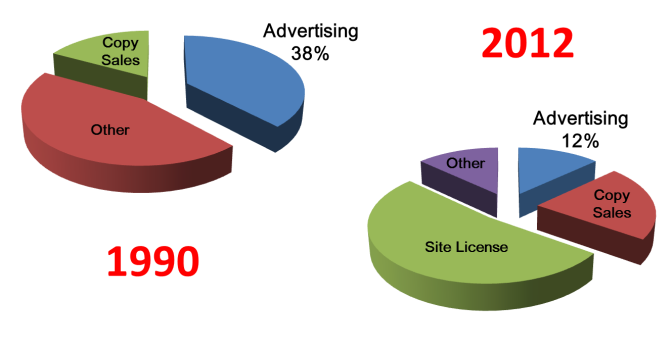In the past 22 years we have witnessed a major shift in scientific publishing. Changes in the way scientist’s access articles have a significant impact on the effectiveness of page advertisements and other forms of advertising in journals.
In 1990 researchers accessed information physically through their institutional library. Readers subscribed to journals which they physically read. In present day the majority of scientific articles are accessed online in PDF format. This development reduced the effectiveness of the traditional page advertisement in print.
Online banner advertisements were adopted with the advent of the online article. The disadvantage to marketers; smaller presentation area, banner Ads are easily ignored. The drop in costs and effectiveness is reflected in the changing revenue breakdown of STM publishers, decreasing from 38% in 1990 to 12% in 2012, with continued decreasing trends.
Increase marketing effectiveness
As a result of fundamental changes in the way published information is being accessed, we need to make changes in marketing to avoid losing the attention of researchers. Journal articles are read and trusted by researchers. Journal articles are permanently available to scientists.
Companies which contribute content to the scientific community through article publication create “pull” resources with useful content, in contrast to the “push” advertisement. Scientists being intelligent people are quite good at evaluating marketing clams. Marketing messages and unsupported claims are quickly blocked out by scientists.
Creating published content
There are several routes that can be taken to produce published content. Content can be contributed by either authoring or co-authoring articles with an academic instruction. If your organization doesn’t have the expertise to author articles, preform applications with your product you can support the development of publications with educational or “sponsorship” grants. These grants can cover the costs of publication for academic authors. In some cases these grants cover travel fees and other costs associated with education.


